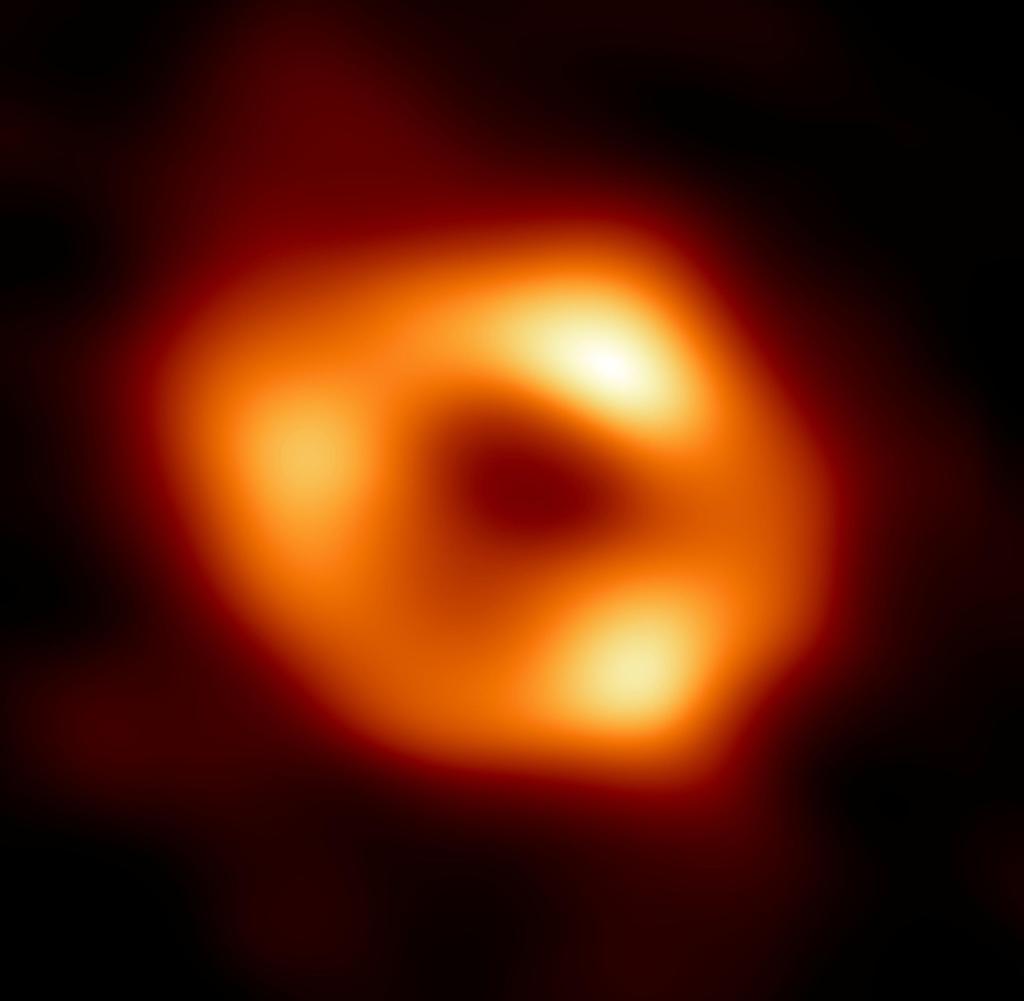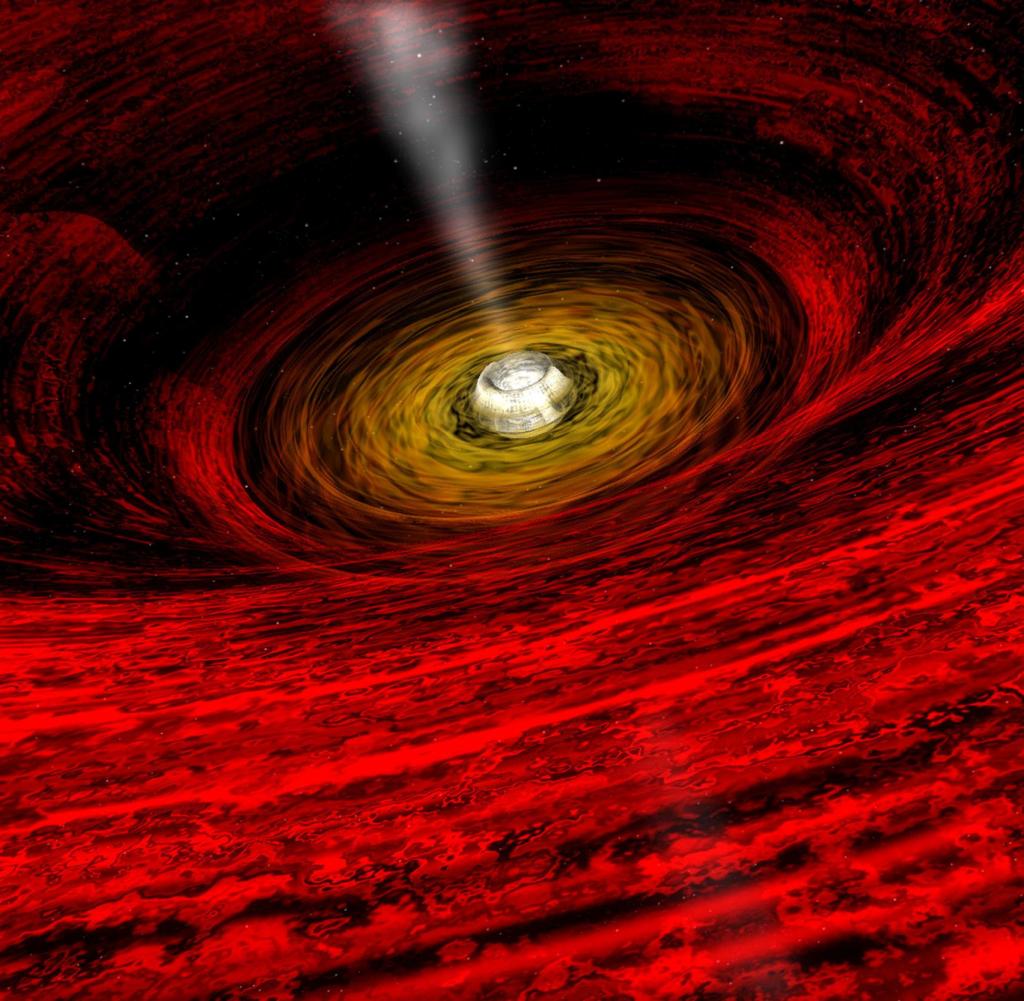Solve the mystery of supermassive black holes

A bright star-like quasar can be seen from outside its host galaxy
Source: picture alliance / Hubble Space Telescope / ESA / Hubble / dpa
Quasars are supermassive black holes with enormous luminosity. The way it formed in the early days of the universe has always baffled astronomers. Now they have found an explanation. Cold gases play an important role here.
BNearly a billion years after the Big Bang, the first quasars in the universe – supermassive black holes at the centers of newly formed galaxies – erupted. But how can such large objects of up to a billion solar masses arise in such a short time – from an astronomical point of view?
An international team of researchers has found an answer to this question with the help of computer simulations: streams of cold and turbulent gas condense to form the first black holes with a mass of ten to one hundred thousand solar masses. Scientists wrote that these objects then act as “seeds” for the formation of supermassive black holes In the magazine “Nature”.
In today’s world, nearly every galaxy has a large black hole at its center with a mass millions to billions of times the mass of our Sun. At first, astronomers believed that these supermassive black holes would increase more or less evenly throughout cosmic history. However, this idea had to be corrected when many quasars were discovered in the early universe. They are also supermassive black holes in which matter flows and heats up in the process – which is why quasars shine brighter than the galaxies at their centers.
“Cosmic simulations have shown that these quasars can form through the flow of cold gas,” explains Mohammed Latif of the United Arab Emirates University and colleagues from Austria, Britain and Canada. “But the prerequisite for this is that black holes containing ten to one hundred thousand solar masses do exist. So far, however, there is no conclusive explanation for their formation.”
Although unusual scenarios could lead to the formation of these “seeds” of supermassive black holes – they rarely explain the frequency of quasars in the young universe.
Latif and his colleagues have now succeeded in using high-resolution computer simulations to find an explanation for the formation of the first black holes. As scientists reported, the influx of cold gas into galaxies forming in the young universe causes severe turbulence – this turbulence prevents stars from forming from gas in the normal way.
Only when the mass of the accumulating cold gas increases to 30,000 to 40,000 solar masses, the dense gas cloud collapses under the influence of its own gravity and forms a supermassive black hole.
According to Latif and colleagues, this simple and robust process ensures that wherever there is enough gas to form a quasar, a “seed” can form initially. This process also occurs frequently enough to explain the number of quasars. “The first quasars were a natural consequence of the formation of structures in the early universe, and did not require exotic, finely tuned environments, as previously thought,” the researchers say.

“Prone to fits of apathy. Zombie ninja. Entrepreneur. Organizer. Evil travel aficionado. Coffee practitioner. Beer lover.”









More Stories
NASA receives the message via a laser beam from a distance of 226 million kilometers
Upgrade using 20 GPUs and 20 CPUs in testing [Update 3]
Raspberry Pi5 as desktop replacement after 5 months